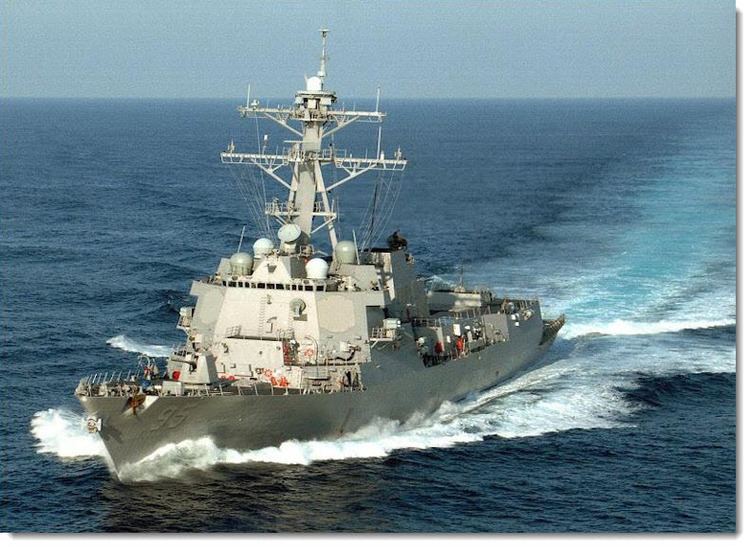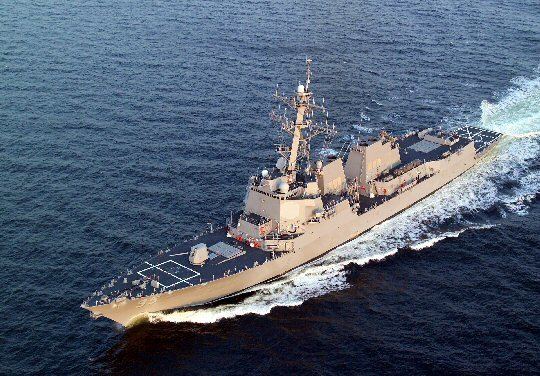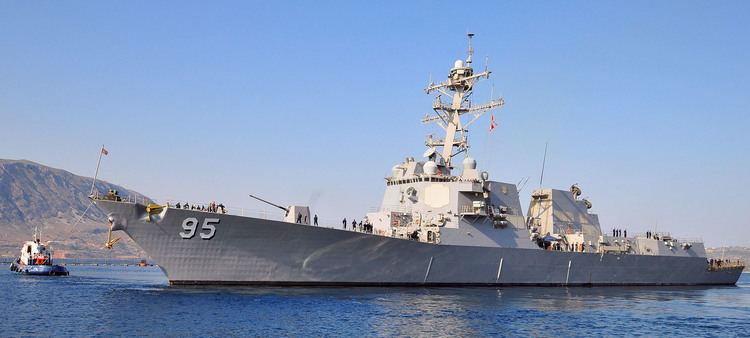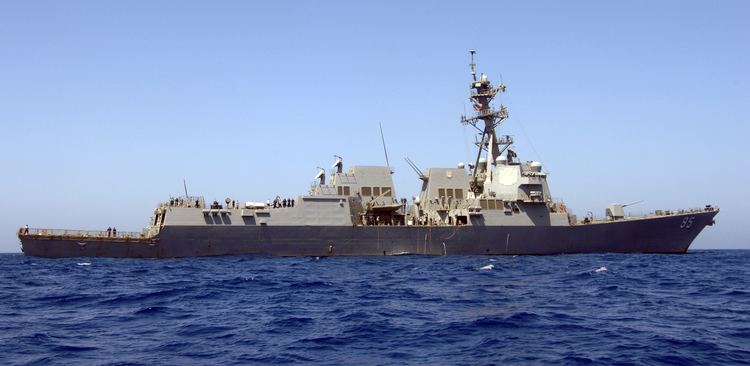Ordered 6 March 1998 Commissioned 11 December 2004 Construction started 15 July 2002 Length 155 m | Namesake James E. Williams Laid down 15 July 2002 Motto Lead from the Front Launched 25 June 2003 Weight 9,348 tons | |
Msc unrep uss james e williams
USS James E. Williams (DDG-95) is an Arleigh Burke-class destroyer in the United States Navy. She was named for Chief Petty Officer James Eliott Williams (1930–1999), a Medal of Honor recipient.
Contents
- Msc unrep uss james e williams
- Uss james e williams ddg 95 returning to norfolk naval base va passing by cape henry
- History
- Controversies
- Ports visited
- References

Uss james e williams ddg 95 returning to norfolk naval base va passing by cape henry
History

USS James E. Williams was laid down on 15 July 2002 by the Northrop Grumman Ship Systems at Ingalls Shipbuilding in Pascagoula, Mississippi and launched on 25 June 2003, sponsored by Elaine Weaver Williams, Chief Petty Officer Williams' widow. On 11 December 2004, James E. Williams was commissioned in Charleston, South Carolina, Commander Philip Warren Vance in command.

On 2 May 2006, James E. Williams deployed on its maiden deployment as part of the Global War on Terrorism Surface Strike Group (GWOT SSG) 06-2. James E. Williams, along with the amphibious transport dock Trenton and guided-missile cruiser Hue City, joined the Global War on Terrorism Surface Strike Group (GWOT SSG) 06-2 overseas on 18 April. On 17 October 2006, James E. Williams completed its first deployment conducting anti-piracy operations off the coast of Somalia as part of the maritime security operations.

James E. Williams deployed again on 9 July 2007 as a part of the Enterprise Carrier Strike Group. The strike group consisted of the aircraft carrier Enterprise, the destroyers Forrest Sherman, Arleigh Burke and Stout; the guided-missile cruiser Gettysburg; and the fast-attack submarine Philadelphia, and also the fast combat support ship USNS Supply. On the morning of 30 October 2007, Combined Maritime Forces Headquarters, based in Bahrain, received a call from the International Maritime Bureau, located in Kuala Lumpur, Malaysia, providing the status of the North Korean cargo vessel Dai Hong Dan, which had been taken over 29 October by Somali pirates. The ship was approximately 60 nautical miles (110 km) northeast of Mogadishu, Somalia. At that time, James E. Williams was about 50 nautical miles (93 km) from the vessel and sent a helicopter to investigate the situation. The destroyer arrived in the vicinity of the Korean ship midday local time and contacted the pirates via bridge-to-bridge radio, ordering them to give up their weapons. At that point, the Korean crew had confronted the Somali pirates, regained control of the ship and began communicating with James E. Williams, requesting medical assistance. The crew said the pirates had been in control of the bridge, but the crew had retained control of the steering and engineering spaces. The crew of James E. Williams provided care and assistance for approximately 12 hours to crew members and Somali pirates aboard Dai Hong Dan. Six pirates were captured and one was killed. The pirates remained aboard Dai Hong Dan. In November 2007, James E. Williams aided the crew of the Taiwanese ship, M/V Ching Fong Hwa 168. After the Somali pirates returned to shore, the destroyer escorted the Taiwanese ship out of Somali waters and provided needed supplies and medical assistance.
On 19 December 2007, she returned from her second deployment to the Fifth Fleet AOR in support of Operations Iraqi and Enduring Freedom.
On 20 April 2009, James E. Williams left on her 3rd deployment in 3 years, deploying to the sixth and fifth Fleet areas of operations from Naval Station Norfolk as the lead element of the Bataan Amphibious Ready Group. James E. Williams conducted maritime security operations in the Mediterranean Sea and Persian Gulf regions, and work with international maritime forces to ensure security and awareness in the maritime domain. She returned to her homeport at Naval Station Norfolk on 19 October 2009.
Controversies
Ports visited
During the 2014-2015 Deployment, James E. Williams made port calls to Rota, Spain; Djibouti, Djibouti; Port Victoria, Seychelles; and Port Louis, Mauritius.
